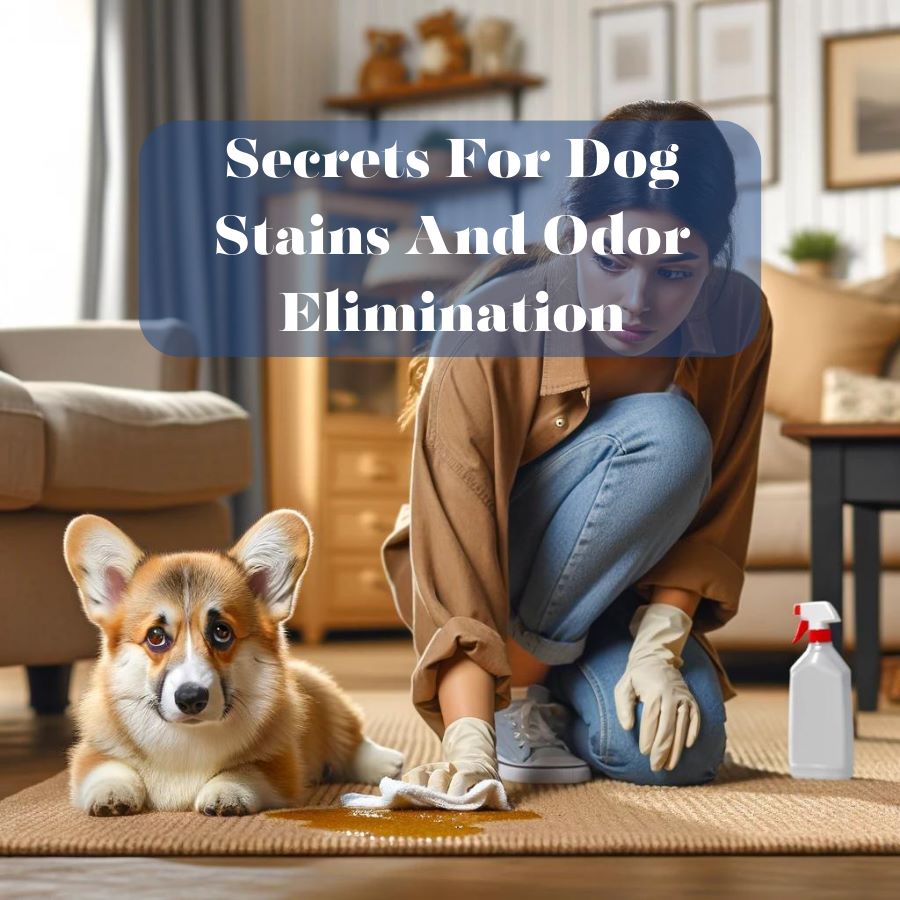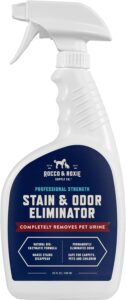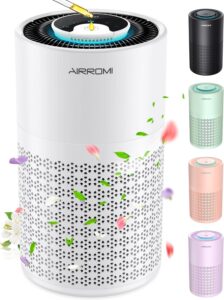
Conquering Canine Chaos: Advanced Strategies for Dog Stain and Odor Removal
Imagine…..
……. a serene afternoon spent washing dishes with the warm sunlight spilling into your cozy den. Suddenly, your tranquility is shattered by the sight of your adorable puppy, Bella, inadvertently turning your cherished rug into her personal restroom.
Or perhaps……….
……….. You return home from a long day at work, only to be greeted by a conspicuous, darkened patch on the carpet – a silent testament to a mishap in your absence.
For pet owners, the war against the stubborn remnants of doggy accidents – the stains and the persistent odors – often feels like a relentless siege on their senses and sanity. This comprehensive guide is designed to arm you with an arsenal of practical strategies and insider tips to vanquish urine stains and eradicate odors, restoring peace and purity to your household. Embark on this journey to reclaim the sanctity of your home, ensuring a harmonious coexistence with your cherished canine companion.
Understanding the Culprit: What Causes Dog Urine Stains and Odors?
Before diving into the cleaning and odor-neutralization battlefield, we must understand the enemy we’re dealing with. Dog urine, much like human urine, is a complex biological substance that can cause stubborn stains and persistent odors if not properly managed. The composition of dog urine and the reactions it undergoes once it hits your carpets or floors play a pivotal role in the cleaning strategies you should employ.
- Chemical Composition of Dog Urine: Dog urine primarily comprises urea, creatinine, uric acid, carbohydrates, enzymes, fatty acids, hormones, sodium, potassium, chloride, magnesium, calcium, and ammonia. When a dog urinates on the carpet, these substances break down, with bacteria playing a significant role in this process. The bacteria feed on the urea, releasing ammonia and carbon dioxide. This chemical reaction is primarily responsible for the strong ammonia-like odor commonly associated with dog urine.
- The Role of pH Levels: Fresh dog urine is typically acidic but begins to alkalize as it dries and decomposes, leading to a more alkaline pH. This shift in pH can cause damage to your carpets and fabrics over time, making the stains more difficult to remove if not addressed promptly.
- Uric Acid Crystals: One of the most challenging components to remove is uric acid. As the urine dries, the uric acid forms crystals that are not water-soluble and can bind tightly to fibers in carpets and upholstery. These crystals significantly cause the lingering odor, as they can re-release the smell when exposed to moisture – a process known as off-gassing. This is why a spot that seemed clean and odor-free can suddenly emit smells again, especially under high humidity conditions.
- Staining Mechanisms: The staining is primarily due to the pigments and other organic compounds in the urine, which can penetrate and adhere to the fibers of carpets and upholstery. Light-colored carpets and fabrics are especially vulnerable to staining because the yellow pigments can bind tightly to the fibers, causing a visually apparent discoloration and challenging to remove.
- Moisture and Mold Growth: Apart from the immediate stain and odor, moisture from dog urine can seep deep into the carpet padding or the flooring beneath, creating an environment conducive to mold and mildew growth. This exacerbates the odor problem and can lead to health issues for the household members, particularly those with allergies or respiratory sensitivities.
Effective Removal of Fresh Dog Pee Stains
In this scenario, addressing a urine stain promptly and efficiently can lead to easy removal. Follow these steps……
- Absorb the urine with a paper towel and press down with added weight and pressure.
- Use a heavy object (ex. luggage or a thick book wrapped in a towel for protection). Leave it sitting on the stain for at least 10 minutes.
- Spray an enzyme cleaner (ex. Rocco & Roxie) on the stain, or a homemade solution containing orange peels, brown sugar, and cold water can be used.
- Cover with a towel and a heavy object overnight.
- Use a vacuum cleaner to dry the carpet the following day.
- Rocco & Roxie Co. Stain & Odor Eliminator

- Nature’s Miracle Advanced Stain and Odor Remover
- Angry Orange Stain Remover
2 Methods to Handle Dried Dog Pee Stains on Carpet
- Mix a cup of water with half a teaspoon of dish soap.
- Apply the mixture to the stain, covering the whole stain.
- Blot the stain with a paper towel, repeating for stubborn stains as needed.
- Dry the carpet with a vacuum cleaner.
- In a 1:1 ratio, combine vinegar and warm water.
- Soak a rag in the solution and press it onto the stain without rubbing. Pour the remaining solutions on the spot.
- Scrub the stain with a brush.
- Dry the area with a towel or vacuum
apply baking soda in a thin layer to the stain, followed by a mixture of peroxide (3%) and dish soap. - Scrub the mixture into the stain with a brush.
- Dry the area with paper towels and a vacuum.
Urine not only leaves stains but also produces a strong odor that can be challenging to eliminate. If you’re dealing with dried dog urine on your carpet, there are two methods for removing the odor that are quite similar to removing stains.
Method 1: Vinegar and Baking Soda
- Pour a 1:1 mixture of vinegar and warm water into a spray bottle.
- Spray the solution on the urine spot and let it soak for 15 minutes.
- Press a sponge or rag on the spot to remove excess vinegar solution.
- Press a sponge or rag on the spot to remove excess vinegar solution. (throw away sponge/rag after use!)
- Sprinkle the spot with baking soda for 15 minutes, wait, and vacuum.
- Sprinkle the spot with baking soda for 15 minutes, wait, and vacuum.
- (Preferred method on light-colored carpet. Test in a small area if using on dark colors
- To make a paste, combine 1.5 tablespoons hydrogen peroxide, 2 teaspoons baking soda, and 1 teaspoon dish soap.
- Apply the bubbling paste on the urine spot and leave for an hour. (add pressure to the paste to penetrate down to the pad under the carpet.)
- Let soak for 30 – 60 minutes.
Dampen a cloth and press firmly to remove excess paste. - Place a paper towel on the wet spot, press firmly to remove excess moisture, and vacuum.
Method 3: Club Soda
- Apply club soda on urine spots, let it bubble and soak for 15 minutes
- Press a rag to absorb excess liquid.
- Dry with a vacuum or paper towels, and use an air freshener.
Alternative Tools to Enhance Your Indoor Air Quality
Enhancing Indoor Air Quality
In addition to cleaning up any immediate mess, ensuring optimal air quality is vital for a healthy and comfortable living space. Here are some resources that can assist you with this:
- Air Purifiers: Devices like the Airomi and Levoit air purifiers are excellent at filtering out pet dander
 and neutralizing odors.
and neutralizing odors. - Activated Bamboo Charcoal Bags: A natural solution for absorbing odors and purifying the air.
- UV-C Light Sanitizers: These gadgets use UV-C light to kill airborne pathogens and neutralize odors, offering an additional layer of cleanliness.
With these strategies and tools, eliminating dog stains and odors becomes manageable, allowing you to enjoy a clean, fresh-smelling home. Embrace these solutions confidently, knowing that a harmonious living space with your furry friend is possible and easily achievable. 🐶✨
This article may contain affiliate links. As an Amazon Associate, I earn from qualifying purchases.